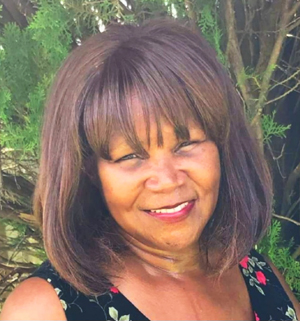
By Dr. Anita M. Lewis-Sewell, MD
Special to The Truth
Life is a journey. This is a familiar and frequently used phrase.
We can all agree that life, like a human kaleidoscope, is constantly changing, always in movement, full of mundane moments and repetitive chores, or complicated by unexpected twists and turns.
For some, life can be a joyous adventure as with the birth of a long-awaited child. For others, life can be fraught with sadness, disappointments, and setbacks.
Good health is one of life’s most valuable possessions. Without good health, life can prove to be limited, painful, depressing and difficult.
Good health and physical fitness are the focus of this article. Your fitness and mine. What type of fitness journey have you committed to taking?
The hope of most healthcare providers is that people of all ages, and from all walks of life, will commit to living healthy lifestyles. The rewards and benefits of being healthy are priceless, far beyond money, trophies or even Olympic medals.
Sometimes people get discouraged on achieving health goals, such as managing their weight; or controlling diabetes, cholesterol, or high blood pressure.
As an advocate of healthcare and change theory, I believe that we have a choice and that life is what we make it. With education, understanding, and effort, we have the power to effect positive changes. What we ultimately believe, understand, and are willing to work for will inform the health choices we make and shape the health journeys we take in life.
National Minority Health Month (NMHM), annually observed in Ohio since 1989, and now nationwide, invites us to pause, review, reflect, and focus on our individual and national state of health and wellness.
We are challenged each year to begin again, reset, step-up, or continue to learn more about how to live healthy lives.
“Better Health Through Better Understanding” is the 2023 theme for this April’s NMHM. In this post-pandemic period, understanding issues related to health, wellness, physical fitness, and self-care are more important than ever before.
I invite you to take this journey on The Fitness Freeway, but first some background and explanation is required.
Physicians, nurses, and other healthcare professionals are people first. We don’t always do what we know, nor do we always practice what we teach or preach. We are vulnerable to the same health challenges and life events as every other person in this world.
The COVID-19 Pandemic was a horrendous time for our entire nation and, in particular, for me. On June 3rd, 2021, COVID-19 claimed the life of my only child, my daughter, Kerri Kaye King, RN, age 49. She was a registered nurse and an accomplished, creative nail technician with two sons.
To date over 1.1 million people in the United States have died due to COVID-19, according to the Center for Disease Control (CDC: as of 3.29.23). Worldwide, COVID-19 has killed an estimated 6.8 million people, according to the World Health Organization (WHO: as of 3.28.23).
These lost souls were our family and friends. They were our mothers and fathers, our sisters and brothers, our co-workers and neighbors, our husbands and wives, and our children and elders.
Our psychological distress and uncertainty during the pandemic was pervasive, and, to a degree, remains an element of our changed reality.
COVID-19 negatively impacted the physical, mental, and emotional health; the educational and financial well-being of millions. Rising rates of anxiety, depression, suicidal thoughts and behaviors were prevalent, even among healthcare professionals.
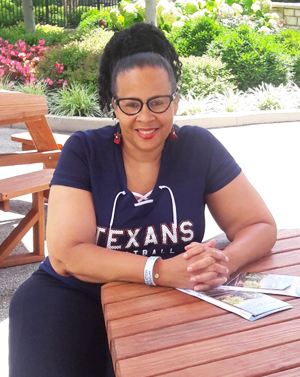
Abuse, crime, violence, and drug overdose rates increased. Historic job losses impacted the ability of people to provide basic food and shelter for their families. School closings and social distancing affected both the mental and educational well-being of students at every level.
Disparities that continue to plague minorities now made us prime targets for COVID-19: obesity, diabetes, sickle cell disease, chronic lung disease, and those who are immunocompromised.
National obesity rates, over 40 percent for all adults, did not improve as most Americans were now locked-down into more sedentary life styles.
For myself, after topping 230 pounds in June 2022, I knew it was time for me to make a change. But I was dealing with multiple challenges, including the unexpected death of my daughter, major depression, and a job loss.
I felt horrible, both mentally and physically, and was having trouble functioning. My excess weight exacerbated the arthritis in my knees. I never smoked and did not have asthma, but I was chronically tired and short of breath.
Worse of all I was despondent after Kerri died, not caring much if I lived or died except for the duty I felt toward my youngest grandson, Aaron. I cried and screamed and raged inside. I could not believe my only daughter was taken from us by this awful disease.
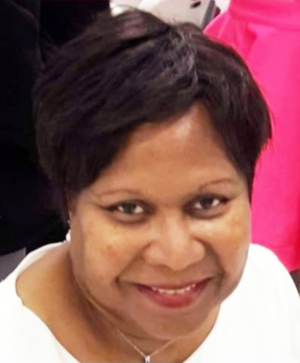
Aaron’s mother was on life support at Toledo Hospital six weeks before she died. We spoke by phone and texted the first two weeks. But we were not allowed to visit her until after she had been placed on artificial ventilation. Kerri was on life support when her son, Aaron, graduated as valedictorian from Horizon Science Academy on May 27, 2021. Kerri died one week later on June 3, 2021.
Her death was hard on our entire family. My grandson was my primary reason and motivation to feel better. I needed to get better for him.
Wellness is a family affair among my relatives. Many of us have healthcare careers or backgrounds. But it was actually one of our non-medical family members who most influenced me to seek help for depression by sharing how much they found it helpful.
After much resistance, I started talking with a counselor for my depression. I was already taking medication for depression, but it was not enough to drag me off the couch or out of the doldrums where I was languishing, despite the prayers, the love, and the encouragement of family and friends.
Self-care was the counselor’s watch word. Self-care. Looking back, now I am so grateful for her support. It came with recommendations and baby steps. Did you take a shower today? Are you eating? You need to try and get a good night’s sleep. Why don’t you take a walk and get some fresh air? She suggested one day.
The counselor congratulated me with each small step. She was gently pushing and prodding me to start taking better care of myself. In retrospect, and as a physician, I understood her process.
For better health, a person has to want to feel better. A person has to want to be healthy. Then a person must take the steps, make the daily effort, through better understanding, to achieve good health: mind, body, and spirit.
The notion of a Fitness Freeway drifted back to mind. It was an idea I had discussed with my sister, Diana Lynne [Lewis] Hughes. She stayed with me for five months after the death of my daughter. Although she had lived in Texas over 40 years, she remained with me during one of the worst times of my life, for which I am forever thankful.
We often discussed how dissatisfied we both were with our out-of-control weight and our poor state of physical fitness. And we reflected on how this had gradually happened over the intervening years.
Like other kids from our neighborhood, my sister and I both learned how to swim at the former Indiana Avenue YMCA in Toledo. In the summertime, as kids, swimming was the thing to do. In those years, swimming was also taught in the public school system.
“Lady Diana,” as we like to call her now, was a very healthy, active, and fit majorette while attending Toledo’s J. W. Scott High School (Class of 73.]
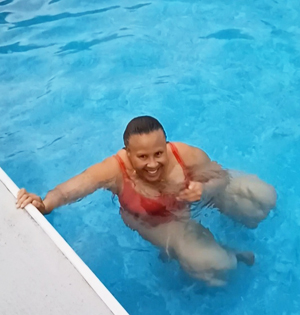
Hughes worked as a life guard at the former City Park Pool in Toledo, OH, for years. She majored in Physical Education at Central State University. After relocating to Texas, she taught in the Houston Independent School District (HISD) and also earned her Master’s in Educational Administration. She also continued to work as a life guard and pool manager in Texas during the summer.
On the other hand, I was not very athletic in high school, but I took up distance running while attending the University of Toledo. My college years, and those immediately following, were my most physically active years.
Then life started to happen! The combined demands of raising families, eating fast foods, busy work schedules, and inattention to self-care insidiously began to take its toll. The pounds mounted, and physical activity was shunted to no-man’s (or rather no-woman’s) land.
My sister and I together came up with the idea of The Fitness Freeway while brainstorming. We both already knew what to do. With our combined knowledge in healthcare and physical education, we would become each other’s fitness buddy. We would hold each other accountable. We would encourage each other (long-distance) to start a fitness regimen, then stick to it. We just needed to get busy and do it, just like that!
But it is important to check with your healthcare provider before starting any new or strenuous fitness regimen, especially if you are older or have chronic health problems.
On your mark. Get set. Ready. Go! So our fitness journeys began.
Journey defined is: an act of traveling from one place to another. In this instance, our goals were to travel from a current state of health to a better state of health.
Our journeys happened gradually. We each took different “on ramps” to enter this Fitness Freeway. I focused on mental health, nutrition and weight management.
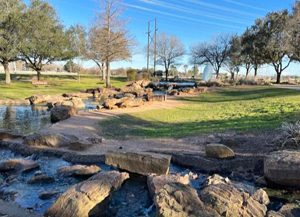
Hughes, 67, a retired educator, started swimming again in February of 2022 after clearance from her family doctor.
During the pandemic years of 2020 and 2021, my sister had only gone walking in nearby community parks. When she began “to feel it was safe to go out in 2022,” she started swimming.
I asked her why she decided to swim as a form of exercise, after not doing it for years.
“Swimming was an activity I enjoyed from my youth into adulthood. It’s like going back home,” she explained. “I chose swimming because it was an activity that I was not only raised up doing, but one that I was good at,” adding that “it’s a total body workout for cardio and endurance.”
Why exercise?
Everyone will benefit from any amount of moderate-to vigorous physical activity; age, abilities, ethnicity, shape, or size don’t matter {CDC: Benefits of Physical Activity.”
I will always remember the health advice shared by Dr. Murthy Gokula, MD, a charming geriatrician, at a women’s health forum. He said, “Do you want to know the secret of youth? It is this: Exercise. Exercise. Exercise.”
Those three words packed a lot of wisdom.
“Regular physical activity is one of the most important things you can do for your health. Being physically active can improve your brain health, help manage weight, reduce the risk of disease, strengthen bones and muscles, and improve your ability to do everyday activities. Only a few lifestyles choices have as large an impact on your health as physical activity {CDC: Benefits of physical activity article}.”
The immediate benefits of exercise also include improved thinking or cognition, and improved sleep; lower blood pressure; sharper thinking, learning, and judgment; and reduced risks of depression and anxiety. {CDC: Immediate Benefits of Physical Activity}.”
As a 13-year breast cancer survivor, I still wasn’t ready to get physically active yet, so I decided to work on nutrition and weight management. I took an online nutrition course, then set a weight loss goal. Proper nutrition and physical activity both decrease the chance of recurrence or developing many types of cancer.
My own progress was slow, but steady. I was able to lose twenty (20 pounds) over seven months, between July 2022 and January 2023. I began to feel so much better. I want to lose additional weight, but my next goal is to increase my physical activity.
Federal guidelines still recommend getting 150 minutes of physical activity each week, but it doesn’t have to be done all at once. Whatever activity you choose can be divided into smaller segments and spread out over the week. {CDC: Benefits of Physical Activity}.”
Hughes said: “I started out going swimming two days a weeks, and have now increased to five.” She usually stays one hour for each pool session, adding that “the weekends are my rest days.”
Is there a fitness goal you want to pursue?
NMHM is a great time to begin anew. Understanding is key. We must know better to do better.
Here are a few tips to bear in mind as you plan your own fitness journey:
- What’s your why? Understand why physical fitness is important.
- Choose an activity you enjoy. You will be more likely to stick with it.
- Decide when and where the best times are and places for you to engage and remain committed to a fitness regimen.
- A fitness buddy, or group of supportive and like-minded people, can encourage you to remain on track.
Hughes said, “Since I started swimming it takes me back to a part of my life when I was busy, active, and engaged with the community.”
Your journey toward physical fitness and good health is well worth the effort. It will be different for each person. There may be individual hurdles to overcome. However, choose to practice self-care in all its dimensions. You deserve to be physically, mentally, and emotionally healthy.
The CDC website (www.cdc.gov) is a valuable resource which I highly recommend. Check out “Getting Started” under the CDC section titled” Healthy Weight, Nutrition, and Physical Activity.
